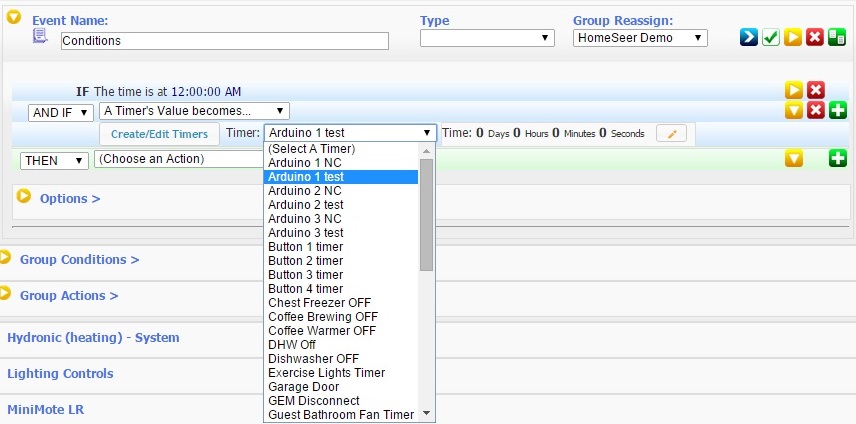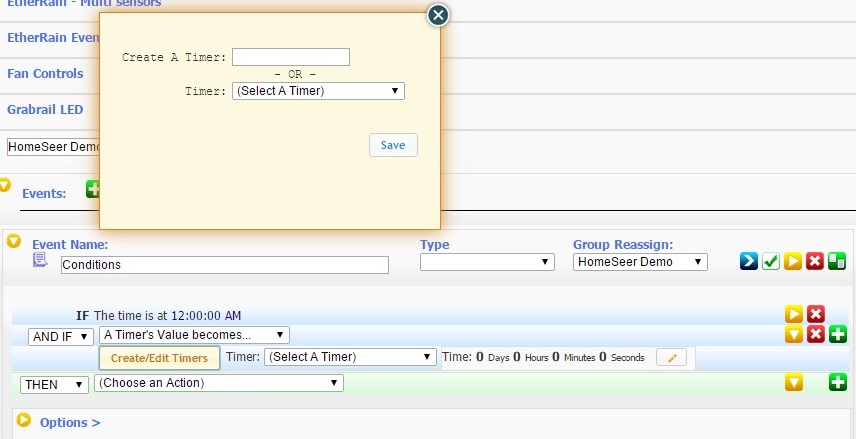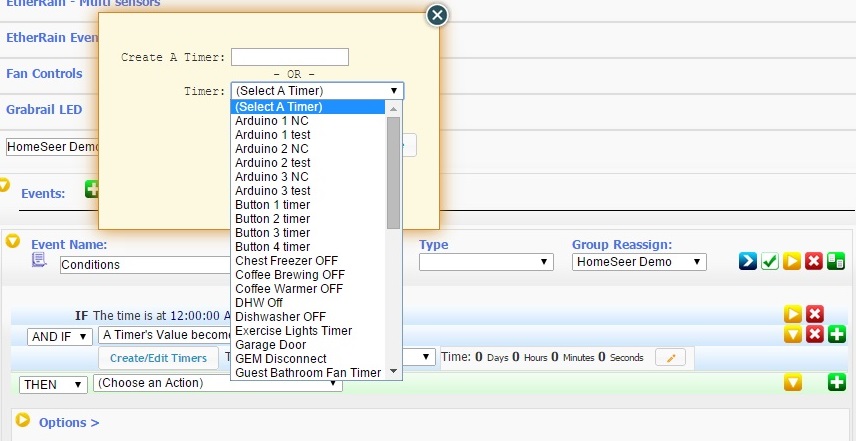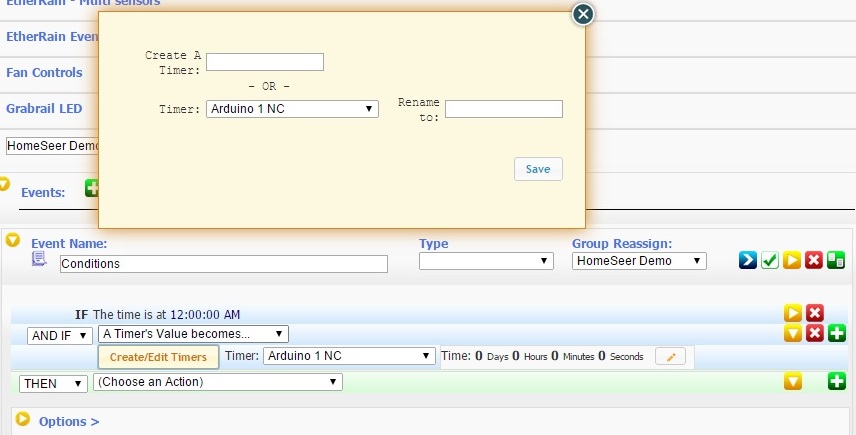Just like Counters, you can also create or manipulate a timer from the Tools> Global Variables, Timers & Counters tab at the top of the HomeSeer Web Interface.

There are only three choices for timer conditions. They are much simpler than conditions as they only run forward. A timer always counts up. It can be stopped, restarted (reset and started), set to a value or resumed from where they are stopped. A timer increments by the second and can accumulate to days, hours, minutes and seconds. It is not stated if there is a technical limit to the number of days a timer can run. Timers do persist over a restart. A timer that is running will reflect a value such that it ran even when HomeSeer is down. If it is stopped when HS is shut down the value is retained. Obviously the timer will not respond to the usual start/stop triggers when HS is not running, so it could be way off when HS is restarted, depending on it's state when HS was shut down and for how long. It is not dependent upon the "Enable event catch-up upon power restoration" setting.

As far as choosing and creating timers within an event, it is almost identical to counters. You can pick from a list of existing timers

If you click on Create/Edit Timers, you will get a dialogue where you can enter a new name and create one, or choose among the existing timers. If you try to create a timer with the same name as an existing timer, you will be notified that it exists and you can choose a new name. Be very careful cutting from another document and pasting into this name. If you paste a character that does not belong to the basic ASCII character set, you can corrupt the timer database.


If you have already selected a timer, the dialogue from Create/Edit Timers will offer for you to rename it, create a new timer or choose among existing timers. As above be very careful cutting from another document and pasting into these windows. If you paste a character that does not belong to the basic ASCII character set, you can corrupt the timer database.

Just like counters, timers can be manipulated from event actions. We will cover those actions later in another post.

There are only three choices for timer conditions. They are much simpler than conditions as they only run forward. A timer always counts up. It can be stopped, restarted (reset and started), set to a value or resumed from where they are stopped. A timer increments by the second and can accumulate to days, hours, minutes and seconds. It is not stated if there is a technical limit to the number of days a timer can run. Timers do persist over a restart. A timer that is running will reflect a value such that it ran even when HomeSeer is down. If it is stopped when HS is shut down the value is retained. Obviously the timer will not respond to the usual start/stop triggers when HS is not running, so it could be way off when HS is restarted, depending on it's state when HS was shut down and for how long. It is not dependent upon the "Enable event catch-up upon power restoration" setting.

As far as choosing and creating timers within an event, it is almost identical to counters. You can pick from a list of existing timers

If you click on Create/Edit Timers, you will get a dialogue where you can enter a new name and create one, or choose among the existing timers. If you try to create a timer with the same name as an existing timer, you will be notified that it exists and you can choose a new name. Be very careful cutting from another document and pasting into this name. If you paste a character that does not belong to the basic ASCII character set, you can corrupt the timer database.


If you have already selected a timer, the dialogue from Create/Edit Timers will offer for you to rename it, create a new timer or choose among existing timers. As above be very careful cutting from another document and pasting into these windows. If you paste a character that does not belong to the basic ASCII character set, you can corrupt the timer database.

Just like counters, timers can be manipulated from event actions. We will cover those actions later in another post.






Comment